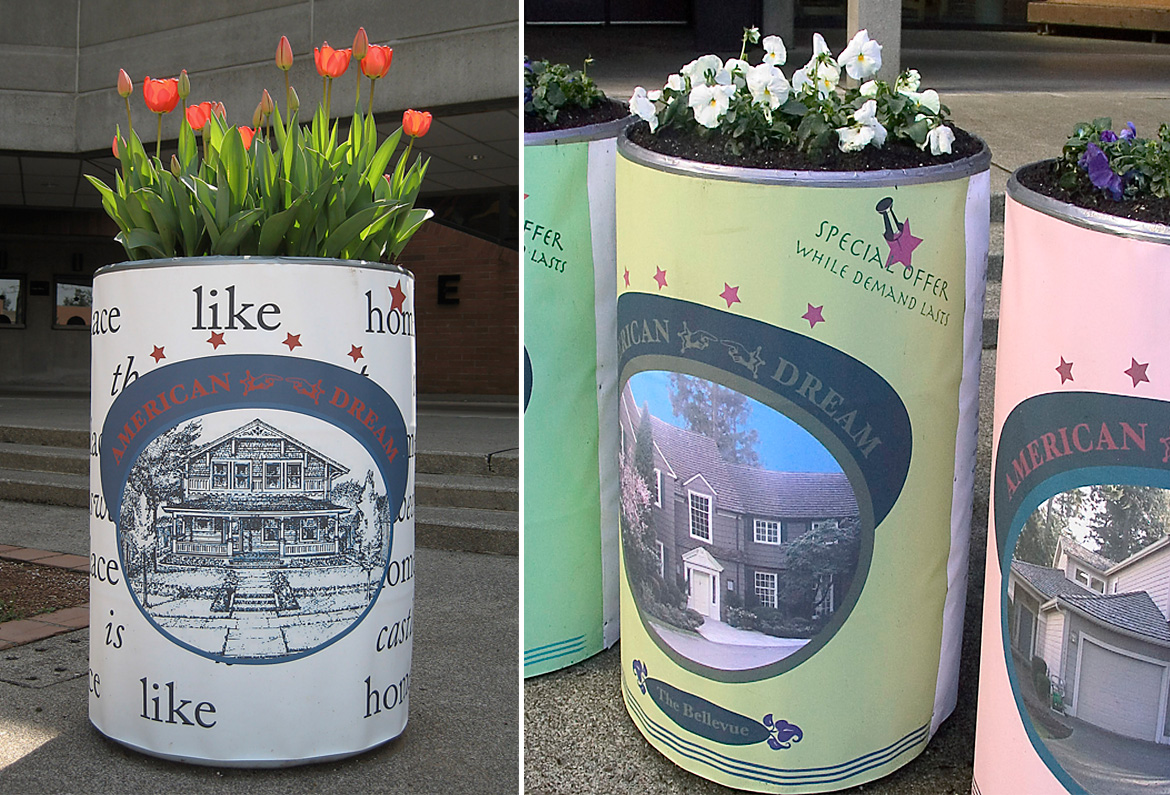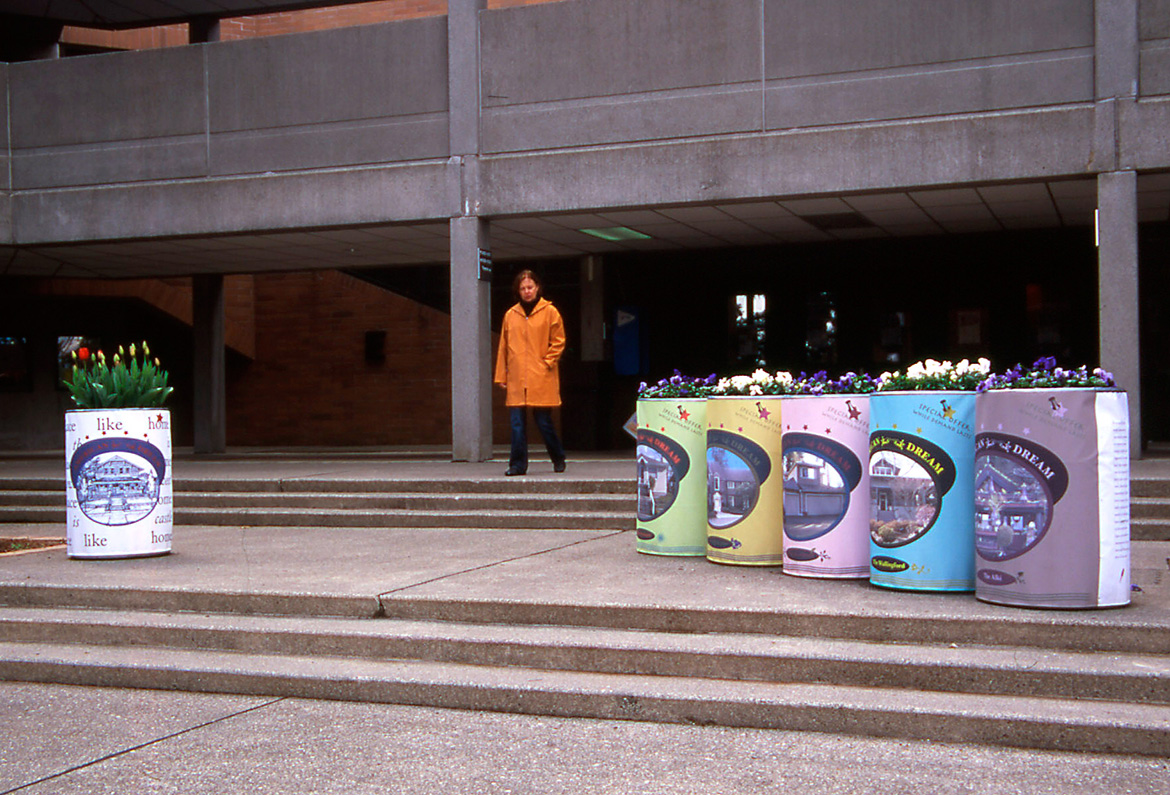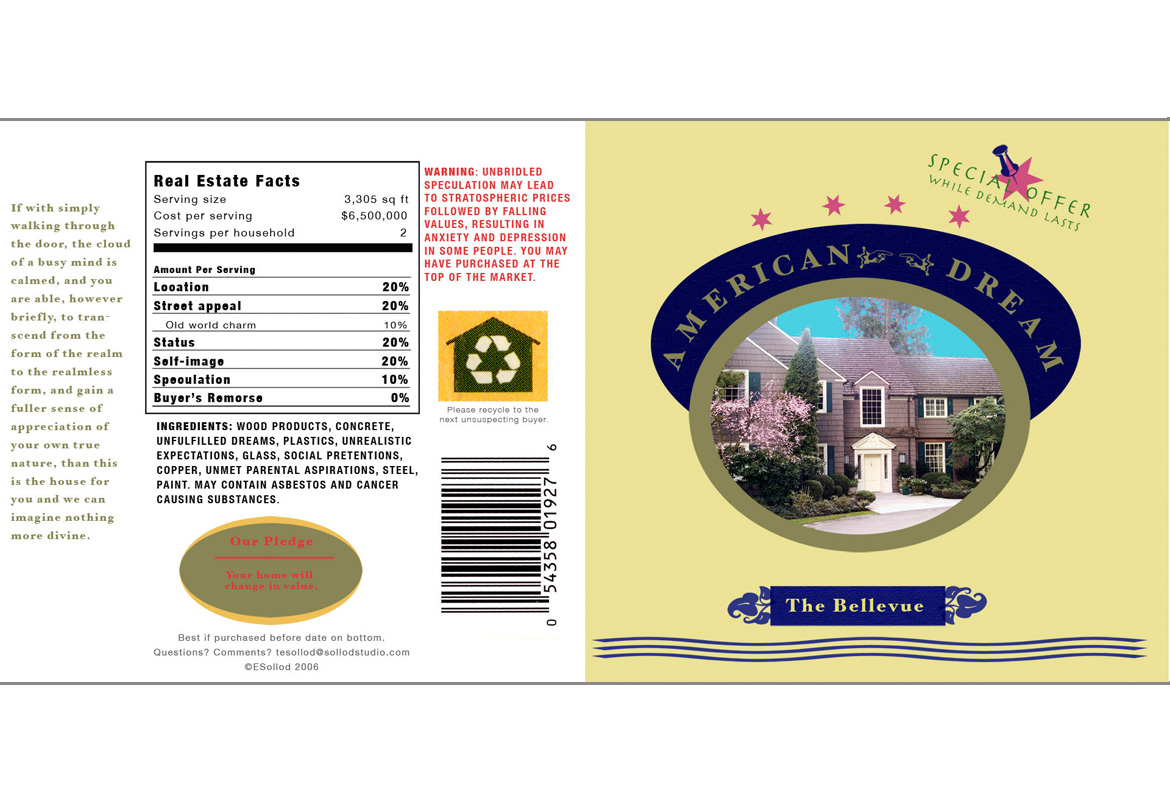American Dream
BCC Reads, Bellevue College, Bellevue, WA
A site-specific installation created for BCC Reads in response to Michael Pollan’s The Botany of Desire. 2006
Ellen created a temporary installation to complement Bellevue College’s year-long study of Michael Pollan’s The Botany of Desire that coincided with the author’s visit during Earth Week 2006.
Inspired by the chapter on tulips, the work drew parallels between the “tulipmania” of 17th century Holland and the “real estate bubble” in 21st century America. It played with the idea of commodification of culture as well as the somewhat deceptive packaging of popular products such as tea or vegetables. (Little did she know how prescient she would be in anticipating the Great Recession of 2008!)
The installation consisted of six 55-gallon drums, labeled to appear like cans of food. The product is the American Dream. Five drums illustrate different houses, each representing a different level of the dream of home ownership. Rather than listing “nutrition facts” that account for the percentage of carbohydrates or proteins included, the American Dream labels list “real estate facts,” such as status, street appeal, location and even buyer’s remorse. It includes a dubious list of ingredients and even a warning. Each of these drums is capped with blue and white petunias. The sixth drum, also labeled, uses a graphic rendering of a house rather than a photograph and aphorisms associated with our notions of home. This final, romantic drum was planted with tulips.
The tulip, originally a wild flower grown in Central Asia, was introduced as garden decoration in Holland and gained wide popularity. Over time, the bulbs became coveted as a sign of high status. Some varieties came to be more costly than an Amsterdam house. Traders made huge amounts of money. Ordinary people began to sell businesses, farm animals and even dowries to enable them to purchase these bulbs. Eventually, oversupply led to lower prices, dealers went bankrupt, and people lost their savings. This same scenario was repeated in the real estate market. As houses became increasingly unaffordable, the asking price had less to do with their intrinsic value. The market became oversupplied and prices fell.



